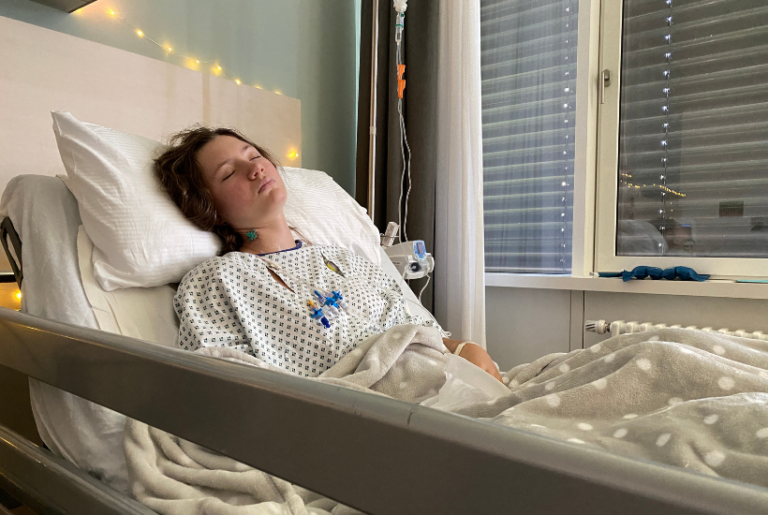To the People Who Stare at My Feeding Tube…
I get it…
You see a long tube coming out from under my shirt. Or if I’m at the beach you see a tube on my stomach connected to cords. The tubing makes it’s way into my small black backpack and you can’t help but wonder what it’s for. If you’re close enough, you probably hear the faint sound of my pump electronically pushing formula through the tube.

You try to look at it inconspicuously to figure it out. You seem either confused or intrigued. If I notice you looking, you quickly look away and pretend you don’t see me.
I used to be bothered by the stares. I mean, didn’t your mom ever teach you not to stare at strangers?!!
But, I get that people are naturally curious about it, and so sometimes they stare. Most people don’t see someone with a feeding tube on the daily basis, or maybe ever!! But I’ve learned that It’s ok. Your stares don’t bother me anymore. Trust me, you feel more awkward about your staring than I do.
But here’s a little tip… just ask me (or anyone else with a feeding tube) about it!!! Say something politely like “hey, I’m curious about what your medical device is used for?”
I’ll be happy to tell you about it because it’s actually a great opportunity for me to spread awareness about feeding tubes and to help people have more comfortable and respectful interactions with patients with feeding tubes.
Some things you probably don’t realize about most of us with feeding tubes:
- We can only eat a little bit and some of us can’t eat at all.
- We need the feeding tube and pump to keep us alive with an easy to digest medical formula for our nutrition that we a need a prescription for.
- Some feeding tubes (like mine) actually bypass the stomach and go straight into the jejunum.
- A pump regulates how slow or fast the formula feeds through the tube. My system can’t tolerate much formula at once, so I need slow and steady feeds over 22 hours.
- We have to sleep with our feeding tubes attached to us while our pumps hang on an IV pole next to our bed.
- I only get two hours off my feeds in a 24 hour period so my tube comes everywhere with me in a backpack.
- Some of us with feeding tubes need other medical devices such as a port to get adequate fluids because we don’t tolerate a high enough feed rate.
- There are different types of feeding tubes. I have a GJ and am connected to two tubes. Feeds go into my jejunal tube and my stomach drains from my G tube.
As I venture out into the world, I’m looking forward to the next stare and anxiously await for the first time someone takes initiative to ask me what my tube is for.

I wear it proudly as it feeds my body the nutrition I need to live!!!
So next time you see someone and you’re curious about their medical device kindly ask us about it instead of just giving us stares! We would much rather tell you about it, then to be stared at 🙂

